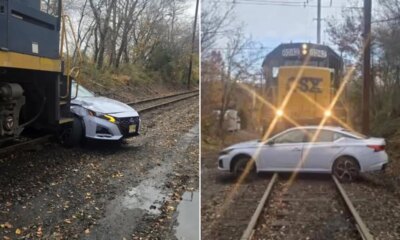BENNINGTON — Sitting in a circle at the Bennington County Multicultural Community Center, Jack Rossiter-Munley shared the story of two families with whom he had worked.
The families had immigrated from South Sudan to Bennington, which was designated as a refugee site in October 2022. Since then, about 205 refugees have immigrated to the town. But the lives that they had hoped for in the United States haven’t necessarily come to fruition.
“These are folks who needed more orientation to work in the United States, but also the line is moving, and so you’re no longer on the line,” said Rossiter-Munley, the director of the Bennington County Multicultural Community Center. “Because their actual work here was unstable, they decided, ‘we’re just going to try to find work somewhere else.’”
Some of the family members moved to the Midwest, where they hoped to find a larger South Sudanese community and more support from their relatives. Those still in Bennington are looking to follow, he said.
Rossiter-Munley and about a dozen other people were gathered on Dec. 5 at BCMCC for a roundtable on Employment Support for New Americans, part of Gov. Phil Scott’s “Capital for a Day” initiative. That day, Scott and several of his cabinet members stationed themselves around Bennington County, holding meetings and hosting conversations with local leaders as they heard how to better support Bennington County.
The roundtable came at an especially pressing time for local immigrants. On Dec. 2, the U.S. Citizenship and Immigration services under President Trump announced that it would pause its review of applications for green cards, asylum and citizenship following the shooting of two National Guard officers deployed in Washington, D.C. The pause applies to 19 countries — including Afghanistan and the Republic of Congo — from where many new Americans in Bennington emigrate.
People also come to Bennington from Venezuela, South Sudan and Iraq as part of the resettlement programs, Rossiter-Munley said. At the following Monday’s Select Board meeting, he read a statement on behalf of Afghan women in Bennington, condemning the violence in Washington, D.C. and asking for the community’s understanding. And at the roundtable, he was clear about the legal implications for those already living in Bennington: “nothing has changed.”
Kendal Smith, commissioner of the Department of Labor, was in attendance at the Dec. 5 meeting and represented Vermont. She sought to understand how the state could better support immigrants and refugees in Bennington County.
The biggest challenges Smith identified were language access support, transportation and licensing attainment, she said.
Translation is an area that gets highlighted the most in Bennington because the town is “uniquely deficient” in providing such community support, Rossiter-Munley said. Bennington county was almost 95 percent white, according to the latest census data.
Smith said that the Department of Labor is exploring funding the purchase of more translation devices to help overcome language barriers at work. The state currently contracts with Propio, an AI-based interpretation service. BCMCC uses Boostlingo to translate their speech into languages like Swahili and Dinka.
Another difficulty in Bennington is access to transportation to work. Wendy Morris, the Department of Labor’s regional manager, said that even commutes between Bennington and Manchester can pose serious challenges for new Americans.
“We help them get a job — let’s say we could do that, and we get them to Manchester,” she said. “We do the interview with them. How do we get them there every single day?”
The Department of Labor will explore “creative ways” to fund and provide driver’s licenses to immigrants and refugees, said Rowan Hawthorne, the policy and legislative affairs director at the Commissioner’s office. The Department will also work with the Office of Professional Regulation to “overcome licensing transfer barriers.”
Nearly every member of the roundtable stressed that immigrants and refugees in Bennington faced difficulties finding jobs that suited their training — for example, as pharmacists or engineers — and often were met with employers who were skeptical about hiring them.
All of it means that volunteers and leaders working with refugees are stretched thin.
“I can’t say enough how everybody in this room is doing more than their job,” said Sean-Marie Oller, director of the Tutorial Center, a Bennington nonprofit that provides adult education and literacy classes.
Still, Rossiter-Munley tries to be optimistic. He cited a study that showed refugee resettlement provided a net benefit of $123.8 billion to local, state and federal economies. And he’s encouraged by the state Department of Labor’s openness to growth.
“When we are sitting down to meet with employers, or offering support or working alongside the Department of Labor, the more of that knowledge can become just part of the day-to-day work of a how a local department … functions,” he said.
“This is part of how we work, and it’s not a special one-time project.”











































